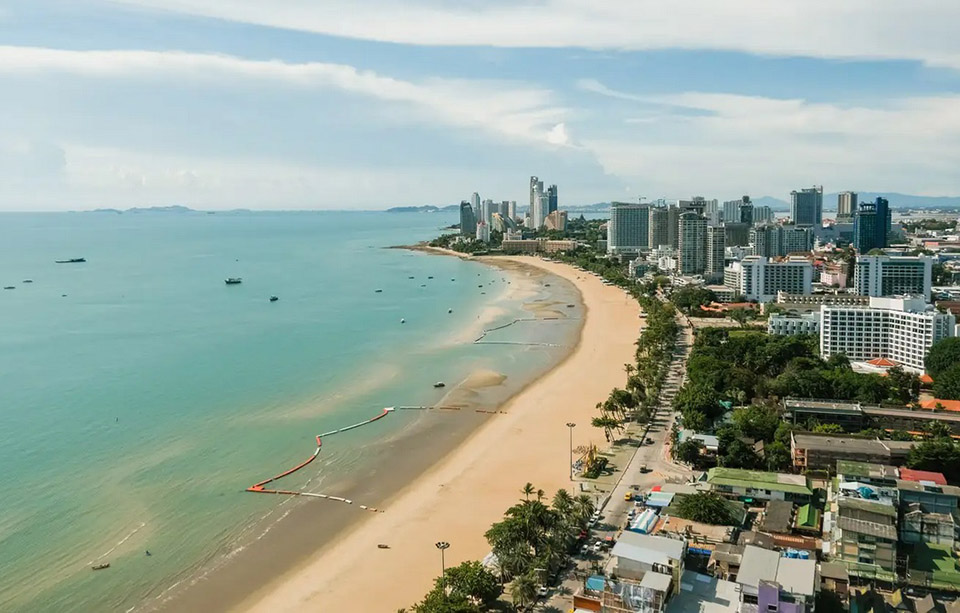
PATTAYA, Thailand – Research Director at Colliers International Thailand, Patrachai Thaweewong, reported that the condominium market in Chonburi province saw the launch of 8,700 units worth 25.7 billion baht during the first half of 2024. Specifically in Pattaya, there were 9 new projects with a total of 6,997 units valued at 21.2 billion baht, marking the highest figures in three years. Of these projects, five were developed by Thai companies and four by foreign developers, who have been active in Pattaya’s real estate sector for many years. In comparison, only 3,000 units worth 15 billion baht were launched in the first half of 2023.
Several publicly listed real estate companies, such as AssetWise, Origin, Sansiri, and Habitat Group, are continuing to develop new projects in Pattaya, seeing potential in the high-spending foreign clientele. Notably, Chinese buyers have shown a strong interest in purchasing entire buildings, as seen with The Origin Pattaya, highlighting significant demand from international customers. Unlike Phuket, Pattaya’s market attracts a diverse range of buyers, including Thais, Chinese, Russians, and French nationals.
Sansiri is also expanding into industrial zones with its “WAY” low-rise condominiums near the Amata Nakorn industrial estate, starting at 990,000 baht. These projects, located in areas like Bang Saen and North Pattaya, have performed well among workers and investors seeking rental properties.
A portion of Pattaya’s condominium demand comes from loyal followers of Bangkok-based developers, such as Sansiri, Origin, and AssetWise, who are purchasing properties as investment opportunities.
However, despite the market’s recovery from a decade-long oversupply of 16,000 units, the rapid increase in supply is raising concerns. The Pattaya market, which once shrank to over 1,000 units, is now experiencing resurgence in inventory. Experts warn that the market should not exceed 4,000 new units annually, yet 6,997 units have already been introduced in the first half of this year, signaling potential oversupply issues.









